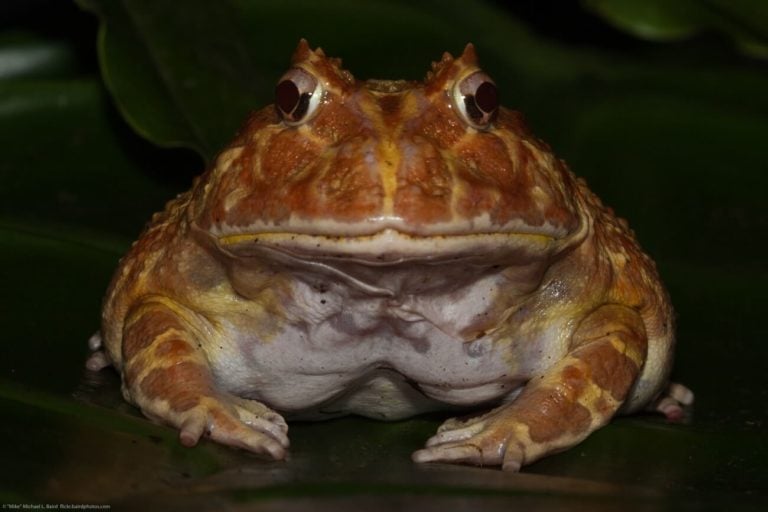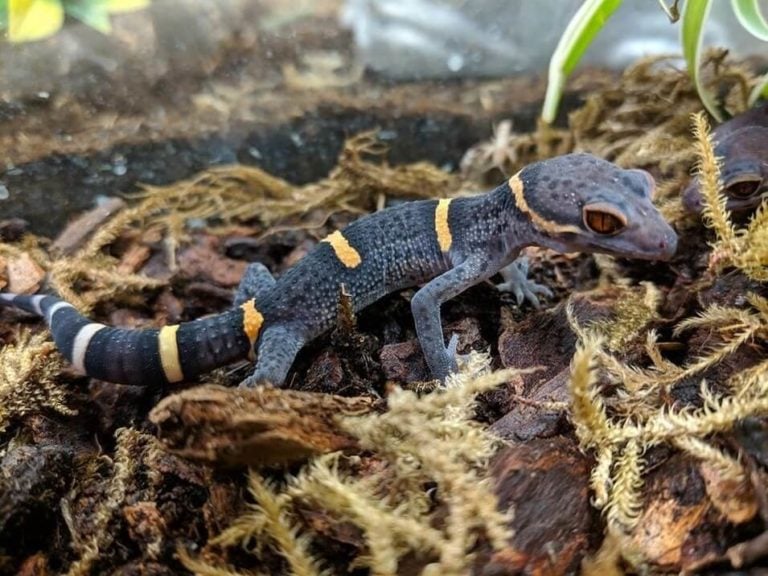The Kenyan Sand Boa is a tremendous pet snake option that’s rather popular these days. There are two main reasons why this species is one of our all-time favorites:
First of all, they look amazing. The colors and patterns of this snake are quite interesting, and you’ll never get tired of looking at them.
This species is also very easy to keep. These snakes are extremely low-maintenance and a great option for owners of various experience levels.
This guide will teach you all the essential elements of Kenyan Sand Boa care. You’ll learn about their tank setup, size, lifespan, diet, and more!
Table of Contents
Species Summary
The Kenyan Sand Boa (Eryx colubrinus loverdgei) is an easy-going snake that helms from East Africa and parts of the Middle East. They live in hot desert climates and like to spend most of their time burrowing in the substrate.
These snakes are a good option for reptile hobbyists who want to care for a Boa constrictor. They belong to the larger Boa constrictor family. However, they are much smaller and far easier to care for.
Kenyan Sand Boas are beautiful pets that don’t require a ton of specialized care. As a result, they’re a popular breed that’s readily available to any hobbyist up for the challenge!
Kenyan Sand Boa Lifespan
The average Kenyan Sand Boa lifespan is around 20 years with the right care. However, some owners have reported these snakes living past 30 years of age!
Like other species in the Boa family, Kenyan Sand Boas have very long lives.
This makes them a long-term commitment. Of course, the lifespan of a Kenyan Sand Boa is dependent on many factors. While they are not too difficult to care for, the snakes can respond negatively to poor diet and ill-fitting habitat.
If you want to maximize their lifespan, proper care is key. Following established care guidelines can keep your snake healthy and help it reach the upper end of the life expectancy range.
Appearance & Colors
Kenyan Sand Boas are girthy snakes. In fact, it’s not uncommon to see girth measurements remain constant throughout the length of the body. Except for the tip of the tail and head, these snakes are very uniform.
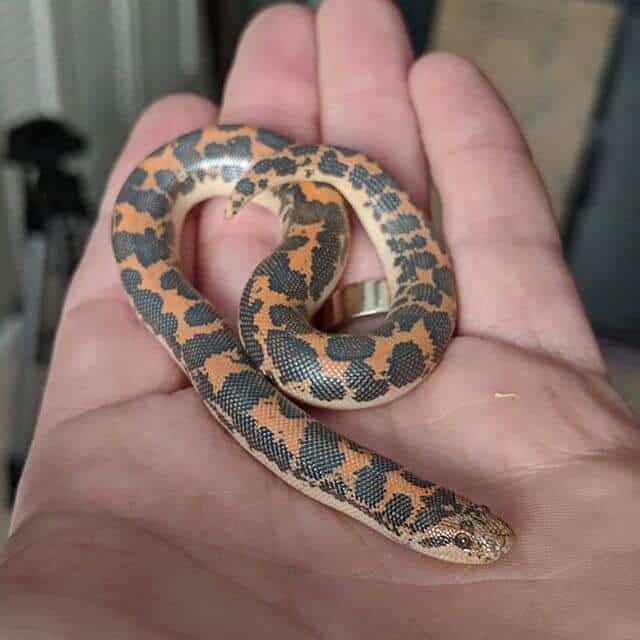
When it comes to color and skin pattern, there’s a lot of variety with the Kenyan Sand Boa. The main color morph you’ll see incorporates shades of black, dark brown, and orange. Brown patches cover the entire body, creating a distinct pattern.
That said, these snakes are bred in captivity. As a result, there are several unique morphs available.
Albino Kenyan Sand Boas are quite popular. They’re unable to produce black pigment, so they typically take on a pink or light orange hue. The same saddleback pattern on their backs is present, but it’s much more subdued.
There are also Striped Kenyan Sand Boas available. They feature dark orange base colors with a bright visible stripe on their back. You can also get Anery Stripe Kenyan Boas, which are dark black with light gray stripes.
Average Size
The average size of a healthy female Kenyan Sand Boa can reach 2 to 3 feet long, although most females will stay just above 2 feet.
Males, on the other hand, tend to be a bit smaller. The maximum size of a male Kenyan Sand Boa is around 18 to 20 inches.
Expert Tip: If you want to maximize the size of this species you’ll need to give them a large enclosure and a healthy diet. Pretty much every owner who’s gotten these snakes to reach 3 feet in length has done this.
Kenyan Sand Boa Care
Kenyan Sand Boa care is pretty straightforward. They’re low maintenance compared to many other reptiles.
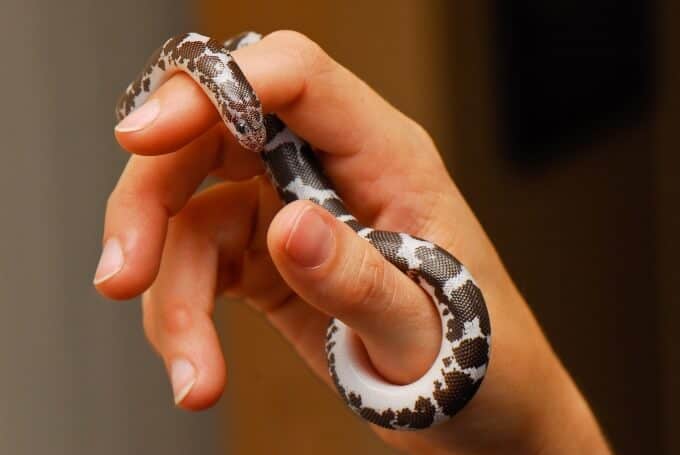
However, that doesn’t mean that you should take their care requirements lightly.
Like all snakes, Kenyan Sand Boas require the right environment and an appropriate diet to stay healthy. Stick to the recommendations below to ensure they’re happy and healthy.
Tank Size
Let’s start with their cage. One of the biggest reasons that Kenyan Sand Boas are so popular is that they don’t need a massive enclosure.
A single healthy adult female can do just fine with a standard 10-gallon tank! They can stay healthy in tanks that measure only 20 inches long, 10 inches deep, and 12 inches high.
That said, a larger habitat is always recommended. Many owners prefer to keep their snakes in 15-20 gallon tanks so that they have room to roam.
There are a few important things to remember when choosing a tank. First is utilizing a screened lid that’s strongly secured. A screened lid provides adequate ventilation. Durable tank clips are essential.
These snakes aren’t big on climbing. However, they are strong enough to move standard tank lids!
Expert Tip: As a good rule of thumb, make sure that your enclosure is no shorter than half of the snake’s length. This will make it harder for the snake to slither their way up. Pair that with some good clips and you shouldn’t have any escape issues.
Tank & Habitat Setup
First, let’s talk substrate.
Choosing the right substrate is paramount for Kenyan Sand Boas. In the wild, they will burrow in the sand to hide and protect themselves from the scorching African sun. That behavior will continue in captivity.
You have a lot of options for the substrate. As their name would suggest, sand is a good choice.
Reptile sand is readily available at most pet stores. Alternatively, these snakes fair well with standard play sand.
Other substrates you could try include coconut mulch, aspen bedding, or even newspaper. Don’t use cedar shavings or gravel. Those materials are harder to burrow in and can be dangerous if your snake ingests them.
Apply 2 to 3 inches of the substrate to the bottom of the habitat. This should be more than enough for the snake to bury their body and get comfortable.
Aside from the substrate, you don’t need a ton of decorations. You can put a decorative branch or some succulents in there to spice the environment up a bit, but it’s not necessary.
Use decorations sparingly, and don’t pile up rocks. If you plan on incorporating rock into the enclosure, use a flat one that’s secured to the bottom of the tank. Falling rocks could cause injury.
Temperature & Lighting
Kenyan Sand Boas, like all snakes, are cold-blooded. That means that warmth is very important.
Not only that, but you want to replicate their natural environment as closely as possible. Kenyan Sand Boas are from Africa, so they’ll need plenty of heat!
During the day, temperatures should be around 85 degrees. This can be achieved with a standard incandescent light that’s turned on 8 to 12 hours a day.
Expert Tip: Kenyan Sand Boas are nocturnal, so they don’t require a special UVB lamp like other reptiles.
These snakes will regulate their temperature throughout the day. Thus, it’s a good idea to create different temperature zones.
Using a heat emitter, under tank heater, or directional lamp, make one side of the enclosure a bit hotter. This hot zone can get as high as 90 to 95 degrees Fahrenheit.
But cooler temperatures are fine at night.
Kenyan Sand Boas fair well when the temperature drops to the mid-70s at night. If needed, use a heat emitter to ensure that the temperature doesn’t get lower than 70 degrees.
Make sure that your snake is getting those dark hours. A heat emitter must be used at night if you need to raise the ambient temperature in the tank. A red infrared bulb can be used to view your snake, but full light should be kept off.
Humidity
The natural humidity levels in the snake’s African habitat are very low. Thus, Kenyan Sand Boas don’t need high humidity levels. Humidifiers are not required. The equipment could do more harm than good with this pet snake.
The only exception is when they shed their skin. Kenyan Sand Boas will shed periodically. It happens more frequently with younger snakes as they grow. But even adults will shed from time to time.
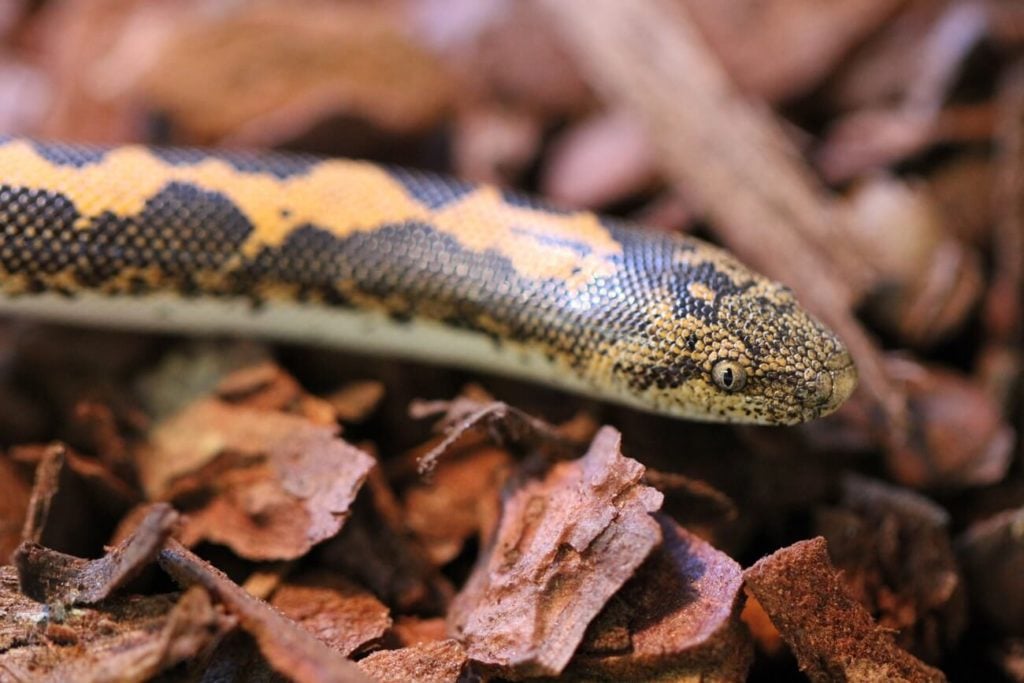
Humidity can be helpful during the shedding process. The old skin will hold onto moisture, making it easier to come off. Some snakes encounter issues removing the skin around the eyes. This can lead to some health issues and irritation.
You can create a boost of humidity with a simple spritz of water. Mist the enclosure to facilitate the shedding process.
Outside of shedding, keep the humidity levels as low as possible.
Water
Providing water is one of the easiest parts of Kenyan Sand Boa care. This species doesn’t need a ton of water, but it’s still important that they have access to it (obviously).
Use a large heavy dish to keep water on hand. It should be heavy enough that your snake can’t tip it over and make a mess.
The dish also needs to be large and shallow. Ideally, you’ll want it to be large enough for your snake to get in and soak its entire body.
Place your dish on the cool side of the tank and make sure that it’s always filled with fresh water.
Food & Diet
Kenyan Sand Boas are carnivores that thrive on animal prey. They are constrictors, so they enjoy live foods that they can kill on their own.
However, exercise caution here.
Live food always comes with risks. The food could escape or cause injury to your snake (although it’s highly unlikely). Luckily, Kenyan Sand Boas aren’t fussy. They will also accept thawed frozen foods as well.
Feeder mice are your best bet when it comes to providing a balanced diet. You can also dust the live or thawed snakes with calcium and vitamin powders if necessary.
Juvenile Kenyan Sand Boas will need weekly feedings of baby mice. Also referred to as “Pinkies,” these baby mice are readily available at most pet stores. They’re frozen and can be thawed out prior to feeding.
Adults will require less frequent feedings. Most owners will feed them every 10 to 14 days. Males can usually handle adult hopper mice while females enjoy larger feeder mice.
If you are using sand as a substrate, you might want to transfer your snakes to a separate feeding tank with no substrate. Kenyan Sand Boas are prone to dragging their food underneath the sand as they constrict.
This process can cause them to ingest some sand while they’re eating. Sand has the possibility to create some stomach problems, so moving them to a separate tank can avoid that risk.
Expert Tip: This isn’t something we worry too much about since this is natural behavior. If you’re trying to minimize risk as much as possible though, that’s something to be aware of.
Potential Health Issues
Kenyan Sand Boas are pretty healthy overall, but there are a few health concerns to be wary of. These are usually caused by poor sanitization and dirty living conditions.
For example, these snakes are susceptible to blister disease or scale rot. This is a bacterial infection that usually affects the bottom scales, also known as the scutes. It’s caused by moving around in damp and dirty environments.
Another common disease is mouth rot. This condition manifests itself through redness around the mouth and nostrils. Again, this disease is a byproduct of a dirty environment.
Both of these diseases are easily avoided by just keeping the habitat clean and dry. Sanitize the environment monthly and get rid of waste often. Remove any grime that you see to keep the tank as clean as possible.
Behavior & Temperament
If your Kenyan Sand Boa is kept in good living conditions and is fed appropriately, you shouldn’t encounter any temperament problems. The species is known for being even-tempered when proper care is used.
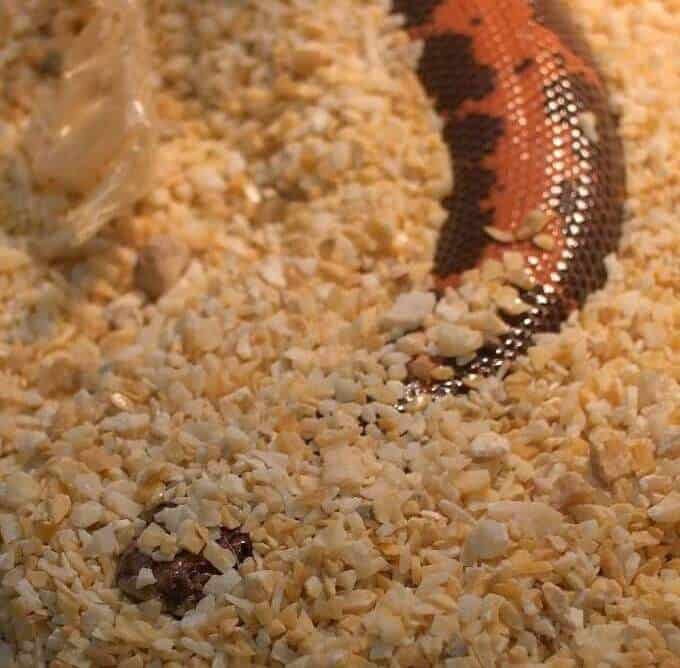
That said, they can get stressed pretty easily. Stress is usually caused by environmental factors, so you’ll need to address those problems swiftly.
Throughout the day, most Kenyan Sand Boas are going to stay burrowed in the sand. They’re nocturnal, so they don’t move around much in the daylight.
Even at night, the movement will be slow and deliberate. They might explore the tank a bit, get some water, or regulate their body temperature. But don’t expect to see a ton of activity.
This is especially true during the winter. While they don’t hibernate, some snakes will eat less when the temperature drops.
Handling Advice
Handling should be kept to a minimum with Kenyan Sand Boas. We wouldn’t consider them aggressive, and many snakes can get used to handling.
But, that doesn’t mean they particularly like it.
Make no mistake, these snakes are perfectly capable of biting humans. Fortunately for you, their bites won’t cause major issues like they are with other snakes.
However, those bites could injure the snake. Thus, you should do your best to avoid stressing the snake out.
When you need to handle them, approach the middle part of their body. Don’t place your hand over their head or first third of the body. They could think that it’s feeding time and strike your hand!
Slowly lift the middle of the body and allow the snake to get comfortable. Their movements may seem a bit spastic in your hand. This is normal and most snakes will get more comfortable as they get older.
Time To Start Looking!
Now that you know how to provide good Kenyan Sand Boa care, you’re ready to get one for yourself.
These snakes are incredibly rewarding and fun to own. We really can’t recommend them enough!
If you’re still a little unsure and want to reach out with additional questions, you’re more than welcome to. We’re always happy to go the extra mile for our readers!

